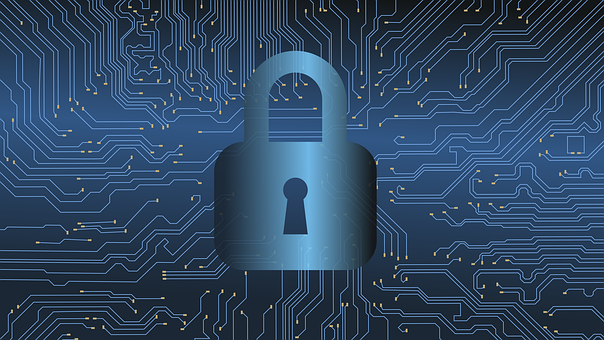If you follow tech news, you must be aware of how cybersecurity threats have evolved in recent years. With security breaches taking place at the highest levels, the concerns for data security is at an all-time high.
Despite significant risks, corporates and businesses are scaling up their artificial intelligence project. There has been a surge in the usage of artificial intelligence from 17% to 33% as per recent reports. Although the companies have experienced significant breaches, they are not keen on halting their initiatives.
It would not be wrong to call artificial intelligence a double-edged sword. On one hand, it creates a strong barrier between cybercriminals and digital systems. On the other hand, AI can be exploited in a malicious way by cybercriminals. Here are the positives and negatives of using AI for Cybersecurity.
Advantages of using AI in cybersecurity
- It can identify cyber attacks
AI can be used to identify any unexpected attacks in high-security official websites and web platforms. Hackers demand for ransom after initiating cyber-attacks and this is the reason why high-security websites rely on AI for detecting any sort of unauthorized access.
AI-based websites have a high success rate in detecting cyber-attacks. AI actually makes cybersecurity teams stronger. Machine learning algorithms and AI can learn patterns from previous attacks. This helps security analysts to improvise themselves.
2. AI can handle the volume and learn over time
AI automates the process of detecting any threats well in advance. It can analyze large volumes of activities that take place over any network. Although it is not 100 percent accurate, it can still detect the majority of activities. This offers respite to cybersecurity experts and helps them focus on a relatively small number of potentially malicious and suspicious activities.
AI can detect malicious attacks based on the behavior of networks and applications as a whole. Over time, it can predict any deviation in behavior and the network’s traffic. This helps the cybersecurity experts to detect any possible threat and counteract it before it is too late.
3. Better data discovery
Data discovery offers better insight into security networks. Cybersecurity experts can develop models for both supervised and unsupervised purposes by using the machine learning algorithm and AI.
Supervised models can put datasets to great use for which the outcomes are known and help in filtering the algorithms that drive the outcome. Unsupervised models do the same, but in cases where the outcome is unknown. As there is not a lot of labeled data available when it comes to cybersecurity, experts can utilize a balanced combination of both approaches.
4. Scope beyond traditional security measures
The traditional security measures rely on the firewall, antivirus software, and similar tools for detection and prevention of web-based security threats. Regular software updates and the attitude of the person-in-charge of the security can help determine the safety of a virtual platform or a website.
AI goes beyond human intelligence for checking all possible threats. It keeps vigilance on the possibility of a breach at unexpected hours. As AI relies on innovative technologies like Machine Learning, hackers find it difficult to gain access to the servers where the valuable information is stored.
AI is undergoing a massive change. Aided by Machine Language, it can track security breaches and prompt the security experts to take measures for preventing any attacks. This makes it quite evident that the role of AI is ever increasing in the modern world.
Disadvantages of using AI in cybersecurity
- Creates adaptive malware
Hackers utilize toolkits and scripts for developing as well as distributing malware. However, the cyber security system has become more sophisticated and intelligent owing to AI. Attackers now utilize AI for increasing the effectiveness of attacks.
They perform checks easily for identifying the hardware configuration and the environment of a victim. However, weaponized AI attacks can prove more damaging if they manage to breach security layers.
- Bypassing CAPTCHA
CAPTCHA is widely used on the internet for allowing applications to differentiate between bots and humans. Visitors are asked to choose texts or images that can only be identified by humans. However, there is a glitch here. Bots can solve captcha accurately with the help of AI. This is where it helps hackers in breaching security.
- Improves phishing attacks
It’s no secret that a lot of organizations have fallen victim to phishing attacks, which was as high as 83% of respondents in 2018. There are several firms that have implemented high-end programs to safeguard themselves against phishing. AI-enabled phishing attacks can easily bypass all security layers.
Attackers can easily frame messages using AI that will produce a great digress of success. Social media enabled phishing attacks utilize AI to identify valuable targets as well as to frame messages based on interests, history, and profile of organizations and individuals.
Conclusion
AI cannot be considered to be a perfect cyber security solution. AI-powered systems can reinforce cybersecurity infrastructure and help security analysts in detecting, containing, and mitigating cyber threats. However, relying on it solely can prove to be disastrous.
AI can be used both for good causes and for implementing malicious attacks. Currently, several research teams are working on eliminating blind spots in machine learning algorithms.
A combination of cybersecurity and AI can help us stay ahead of cyber-attacks and cyber criminals. With proper updates and regular human intervention, it is possible to eliminate the disadvantages posed by AI in the world of cybersecurity.
Author Bio

